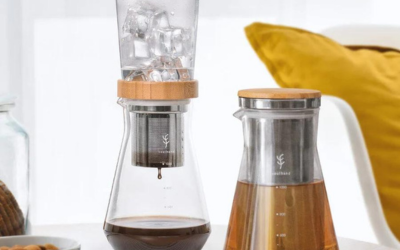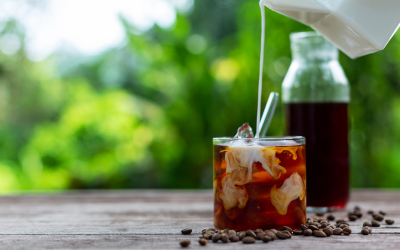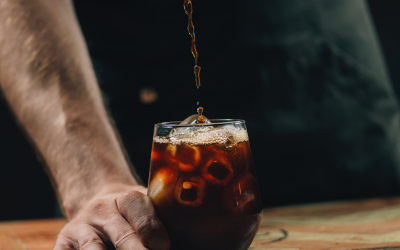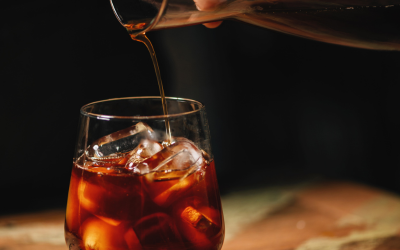Ice Drip Vs Cold Brew Coffee - What's the difference?
Posted by Mark Bentham, The Coffee Man on 19th Sep 2023
To celebrate the launch of our new 2-in-1 brewer, we want to explain a bit more about ice brew and cold brew.

You may have heard of ‘Ice Drip’ coffee brewing. While this is not specific cold brewing, it has similarities.
Cold brew and ice drip coffee brewing are two popular methods of making cold coffee, but they involve different techniques and produce distinct flavours due to their variations in brewing processes.
Here's a breakdown of the differences between the two:
Cold Brew Coffee:
Brewing Method: Cold brew coffee is made by steeping coarsely ground coffee beans in cold or room temperature water for an extended period, usually around 12 to 24 hours. The coffee grounds are fully immersed in water during this time.
Extraction: The slow steeping process extracts flavours, oils, and compounds from the coffee grounds, resulting in a coffee concentrate that is typically less acidic and smoother in taste compared to hot-brewed coffee. The extended steeping time allows for a more gradual extraction of flavour compounds.
Flavour Profile: Cold brew coffee tends to have a milder, less acidic flavour with a pronounced chocolatey, nutty, and sometimes fruity undertone. It's often considered smoother and less bitter than traditional hot-brewed coffee.
Serving: Cold brew concentrate is usually diluted with water or milk before serving, as it's quite strong. It can be served over ice or mixed with various flavourings and sweeteners to create unique cold coffee beverages.

Ice Drip (Japanese-style Iced Coffee or Kyoto-style Coffee):
Brewing Method: Ice drip coffee brewing, also known as Japanese-style iced coffee or Kyoto-style coffee, involves a slow drip method where ice-cold water slowly drips over a bed of coffee grounds. This process is similar to drip brewing but utilizes cold water and takes several hours to complete.
Extraction: The slow drip rate and cold water result in a relatively rapid extraction of flavours from the coffee grounds, similar to traditional hot drip brewing. The cold water helps to preserve some of the aromatic compounds that might be lost in hot brewing.
Flavour Profile: Ice drip coffee tends to retain some of the bright and aromatic characteristics of hot-brewed coffee. The cold water extraction process captures more of the delicate and nuanced flavours while still producing a cold coffee beverage.
Serving: The resulting coffee from ice drip brewing is already chilled and can be served directly over ice. Due to its flavourful and aromatic nature, ice drip coffee is often enjoyed without the need for significant dilution or additives.
In summary, the key difference between cold brew and ice drip coffee brewing lies in the extraction process and resulting flavour profile.

Cold brew coffee is characterized by a milder, smoother, and less acidic taste, while ice drip coffee retains more of the traditional coffee flavours while still being cold and refreshing.
Both methods offer unique ways to enjoy cold coffee, catering to different preferences for flavour and acidity.
If this sounds good to you, check out our new 2-In-1 coffee brewer that allows you to do both of these innovative coffee brew methods.


